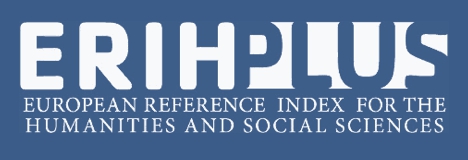The visitor’s perception on environmental interpretation in underground cavities
Abstract
In ancient times humans used caves as a form of shelter. Currently, the use of these environments is also given by tourism in its various forms. Tourism in natural areas and environmental interpretation can help visitors understand the karst landscapes and contribute to their conservation. The objective of this study was to identify the perception of the visitors about the environmental interpretation in underground cavities. The methodology adopted was the application of an online questionnaire, from which 252 valid answers were obtained. The results point to an understanding of the interpretive tools’ use importance, and more than 90% of respondents believe that people are more connected with the environment, also considering that such visits lead to the formation of a scientific culture.
References
CENTRO NACIONAL DE CONSERVAÇÃO E PESQUISA DE CAVERNAS. Orientações e procedimentos. Disponível em:
CIGNA, Arrigo A. Tourism and show caves. Zeitschrift für Geomorphologie, Supplementary Issues, v. 60, n. 2, p. 217-233, jun. 2016.
CRANE, Ralph; FLETCHER, Lisa. The speleotourist experience: approaches to show cave operations in Australia and China. Helictite: Journal of Australasian Speleological Research, v. 42, p. 1-11, 2016.
DAVIDSON, Penny; BLACK, Rosemary. Voices from the Profession: Principles of Successful Guided Cave Interpretation. Journal of Interpretation Research, v. 12, n. 2, 2007.
DE FIGUEIREDO, Luiz Afonso Vaz. Cavernas como paisagens racionais e simbólicas: imaginário coletivo, narrativas visuais e representações da paisagem e das práticas espeleológicas. 2010. 466f. Tese (Doutorado em Ciências) – Universidade de São Paulo - Faculdade de Filosofia, Letras e Ciências Humanas, São Paulo, 2010.
DE FIGUEIREDO, Luiz Afonso Vaz. Espeleoturismo e as contribuições da educação ambiental: aspectos históricos e relatos de experiências formativas no Brasil e México. In: CONGRESSO BRASILEIRO DE ESPELEOLOGIA, 33, 2015. Eldorado. Anais... Campinas: SBE, 2015. p. 697-710. Disponível em:
DE FIGUEIREDO, Luiz Afonso Vaz. O imaginário, o simbólico e as cavernas: estudos preliminares. In: CONGRESSO BRASILEIRO DE ESPELEOLOGIA, 25, 1999. Vinhedo. Anais... Campinas: SBE, 2017. p.113-117. Disponível em: < http://www.cavernas.org.br/anais25cbe/25cbe_113-117.pdf>. Acesso em: 29 mar. 2019.
DE FIGUEIREDO, Luiz Afonso Vaz. Representações sociais e imaginário coletivo sobre as cavernas brasileiras. In: CONGRESSO BRASILEIRO DE ESPELEOLOGIA, 31, 2011. Ponta Grossa. Anais... SBE, 2017. p.345-355. Disponível em:
ERIKSTAD, Lars. History of geoconservation in Europe. Geological Society, London, Special Publications, v. 300, n. 1, p. 249-256, 2008.
GAMS, Ivan. Kras v Sloveniji v prostoru in času. Ljubljana: Založba ZRC, 2004.
HAM, Sam H. Environmental interpretation – A practical guide for people of big ideas and small budgets. Colorado: Fulcrum Publishing Golden, 1992.
HOSE, Thomas. A. 3G’s for modern geotourism. Geoheritage, v. 4, n. 1-2, p. 7-24, 2012.
INTERNATIONAL SHOW CAVES ASSOCIATION. About us. Disponível em:
INTERNATIONAL SHOW CAVES ASSOCIATION. Recommended International Guidelines for the Development and Management of Show Caves. 2014. 17 p. Disponível em:
LOBO, Heros Augusto Santos. Caracterização e tendências de gestão dos impactos negativos e positivos do espeleoturismo. Revista Brasileira de Pesquisa em Turismo, São Paulo, v. 9, n. 2, p. 321-341, mai/ago.2015. Disponível em:
LOBO, Heros Augusto Santos; MORETTI, Edvaldo Cesar. Tourism in caves and the conservation of the speleological heritage: the case of Serra da Bodoquena (Mato Grosso do Sul State, Brazil). Acta Carsologica, v. 38, n. 2-3, p. 265-276, 2009. Disponível em:
LOBO, Heros Augusto Santos; PERINOTTO, José Alexandre de Jesus; BOGGIANI, Paulo Cesar. Espeleoturismo no Brasil: panorama geral e perspectivas de sustentabilidade. Revista Brasileira de Ecoturismo, São Paulo, v. 1, n. 1, p. 62-83, 2008. Disponível em: < https://periodicos.unifesp.br/index.php/ecoturismo/article/view/5839>. Acesso em: 02 abr. 2019.
MAYRING, Phillip. Qualitative content analysis. A companion to qualitative research. In: FLICK, U.; VON KARDOFF, E.; STEINKE, I. (Ed.). A companion to qualitative research. Sage, 2004. part. 5. p. 159-176.
NEWSOME, David; DOWLING, Ross. The scope and nature of geoturismo. In: DOWLING, Ross; NEWSOME, David. (Ed.). Geotourism. Oxford: Elsevier Butterworth Heinemann, 2006. cap. 1. p.3-25.
NOY, Chaim. Sampling knowledge: The hermeneutics of snowball sampling in qualitative research. International Journal of social research methodology, v. 11, n. 4, p. 327-344, 2008.
MOSSBERG, Lena; HANEFORS, Monica; HASEN, Ann Heidi H. Guide performance: co-created experiences for tourist immersion. In: PREBENSEN, Nina K.; CHEN, Joseph S.; UYSAL, Muzaffer S. Creating Experience Value in Tourism. 2 nd. Wallingford: CABI, 2018. cap. 203-2014.
PEREZ, Rui Campos. Simbólica da caverna: um proto-ensaio. In: CONGRESSO NACIONAL DE ESPELEOLOGIA, 20, 1989. Brasília. Anais... Campinas: SBE, 2017. p.31. Disponível em:
PIERSSENÉ, Andrew. Explaining our world: An approach to the art of environmental interpretation. Londres: Routledge, 2003.
TILDEN, Freeman. Interpreting our heritage: Principles and practices for visitor services in parks, museums, and historic places. Chapel Hill, University of North Carolina Press, 1957.
TOLNAY, Zsuzsa. Interpretation in cave tourism – a little utilised management. Disponível em:
VASCONCELOS, Jane. Interpretação ambiental. In: MITRAUD, Sylvia (Org.) Manual de ecoturismo de base comunitária: ferramentas para um planejamento responsável. Brasília: WWF Brasil, 2003, cap. 7, p. 261-294.
ZORN, Matija; ERHARTIC, Bojan; ZOMAC, Blaz. La Slovénie, berceau du géotourisme karstique. Karstologia, v. 54, n. 1, p. 1-10, 2009. Disponível em:
WAILER, Betty; HAM, Sam H. Tour Guides and Interpretation. In: WEAVER, David Bruce. (Ed.). The encyclopedia of ecotourism. Wallingford: CABI, 2001. 2001; cap. 35. p.549-553.

This work is licensed under a Creative Commons Attribution-NonCommercial 4.0 International License.
Policy Proposal for Free Access Journals
Authors who publish in this journal agree to the following terms:
a. Authors retain the copyright and grant the journal the right of first publication, with the work simultaneously licensed under the Creative Commons Attribution License which allows the sharing of the work with acknowledgment of the authorship of the work and initial publication in this journal.
b. Authors are authorized to take additional contracts separately, for non-exclusive distribution of the version of the work published in this journal (eg publish in institutional repository or as a book chapter), with acknowledgment of authorship and initial publication in this journal.
c. Authors are allowed and encouraged to publish and distribute their work online (eg in institutional repositories or on their personal page) at any point before or during the editorial process, as this can generate productive changes, as well as increase the impact and The citation of published work (See The Effect of Free Access).





















